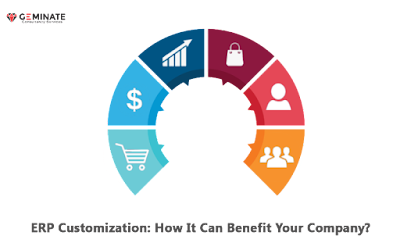This is an era of customization, and to stay competitive in today’s dynamic market situations, you need to do something different. Do you know that businesses shut their doors each year, about 1 in every 12 years?
One of the major reasons for businesses closing down is their inability to keep up with the latest market trends and customize their operations accordingly. To ensure steady growth and development for your business, ensure that you have the most futuristic ERP solution that allows you to customize your business as per the changing needs of your customers.
Many companies stay away from the hassles of adopting open-source ERP customization, as they are unable to integrate other applications. The good news is Odoo ERP solution is here to eliminate all such incompatibility issues, allowing you to work seamlessly.
You need to follow these four essential steps to reap the benefits effectively when it comes to ERP customization.
Step 1: Identify the Purpose of Your ERP Customization
First and foremost, you must identify why you want to undergo ERP customization. What are the problems you want to solve through this customization? Also, determine whether there are any specific problems associated with your departments, teams, or processes.
Once you have these insights, you will have a clear purpose for implementing this ERP customization. Knowing the end goals clearly will show you the right methods of accomplishing them.
For instance, check whether your company is having issues like lack of proper documentation and reporting, specific departmental challenges, or problems in workflow customization. If these issues are visible to you, the purpose of ERP customization will also be clear.
Step 2: Understand the Types of ERP Customizations
Treat ERP customizations as the solutions to several issues, including access management, proper documentation, real-time reporting, and so on. Some of the common types of ERP customizations include -
Documents and Forms
User Interface
Integrations
Functionality Modifications
You may also need to make certain adjustments to the final implementation process, including the units of measurements, customized menus or fields, accessibility, etc.
Step 3: Use the Latest Technologies
Try to use updated technologies that come with inbuilt abstraction layers. An abstraction layer is like a customization laboratory with an additional interface that separates all your ERP customizations from the underlying code. In this way, your system will be protected against all frequent vendor updates.
If you don’t manage your customizations, it may turn disastrous for your business. If your ERP doesn’t have abstraction layers, switch to a better solution that offers them. It will prevent incompatibility issues and save your money in the long run.
Step 4: Declutter Your ERP System
Too much clutter is never going to show productive, results - be it on your office desk or your ERP system. Get rid of all those unnecessary things that are taking up space and are of no use to your business.
Perform a thorough cleanup of your extra lines of code that are overburdening your system and taking up your resources, such as time, effort, and storage space. To ensure a simple and uncomplicated ERP structure, remove all clutter either altogether or disabling their performance.







